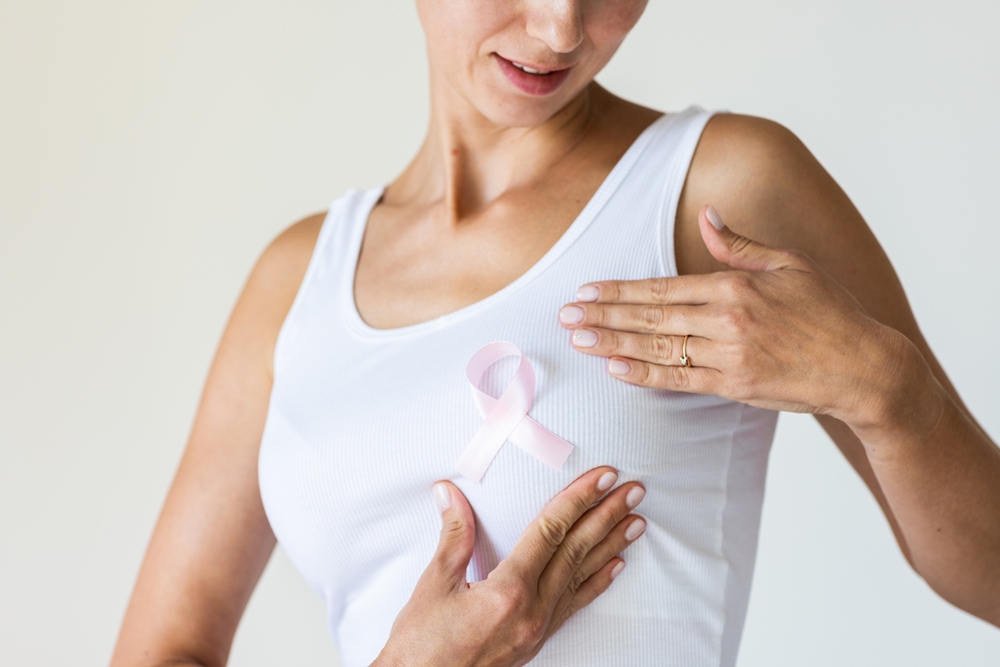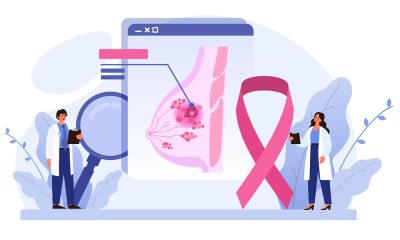Opinion
The rise of preventive gynaecology: What women need to know

Co-written By Dr Claire Gillvray and Tarang Majmudar, Welbeck Cambridge (2026)
Gynaecological cancers, cervical, ovarian, uterine, vaginal, and vulvar, pose a significant health risk across all age groups.
While treatment has advanced in recent years, early detection remains the single most crucial factor in improving survival, reducing the need for invasive treatments, and preserving quality of life.
Why Early Detection Matters
When gynaecological cancers are detected early, the five-year survival rate exceeds 90 per cent.
In contrast, late-stage diagnosis can reduce survival chances by more than half. Early detection truly can mean the difference between life and death.
In England, the introduction of cervical screening in 1998 and HPV vaccination in 2008 has drastically reduced the incidence and mortality associated with cervical cancer.
For endometrial cancer, postmenopausal bleeding is a red flag symptom, prompting timely medical intervention and generally resulting in early diagnosis.
Yet, ovarian and vulval cancers often go unnoticed.
Ovarian cancer’s vague symptoms such as bloating, abdominal discomfort, and appetite changes, are frequently mistaken for benign conditions.
Vulval cancer symptoms like itching or soreness are often overlooked, especially post-menopause.
To improve early detection, a threefold strategy is essential:
- Screening
- Symptom recognition
- Lifestyle modification
1. Screening
Cervical cancer is one of the few gynaecological cancers that is both preventable and detectable through routine screening.
Caused primarily by the human papillomavirus (HPV), cervical cancer rates have dropped significantly due to HPV vaccination and cervical screening programmes.
In 2023, NHS England outlined its goal to eliminate cervical cancer by 2040.
Despite high HPV vaccination coverage (approximately 80 per cent), screening uptake has declined, particularly among younger women, where participation has dropped to 70 per cent.
The upcoming introduction of self-sampling for HPV aims to address this gap and improve participation.
However, no effective population-wide screening methods currently exist for ovarian, uterine, vaginal, or vulvar cancers.
This reality reinforces the importance of self-awareness, recognising symptoms, and attending regular gynaecological check-ups.

Dr Claire Gillvray
2. Recognising Warning Symptoms
Awareness of key symptoms is vital for early diagnosis:
- Cervical cancer: abnormal vaginal bleeding, post-coital bleeding, unusual discharge
- Ovarian cancer: persistent bloating, pelvic discomfort, urinary urgency, loss of appetite, weight loss
- Uterine cancer: postmenopausal bleeding, irregular or heavy periods
- Vaginal cancer: unusual bleeding or discharge
- Vulvar cancer: itching, pain, lumps, or ulceration
Although many of these symptoms can have benign causes, persistence or change from the norm should always prompt medical review.
Historically, women’s gynaecological symptoms have often been minimised or dismissed.
This has led to diagnostic delays for conditions like endometriosis, which still takes nearly 9 years on average to diagnose.
Young women are particularly vulnerable, with symptoms too often attributed to hormonal changes or stress.
Rather than placing blame, we must push for better education, research funding, and structural support to help clinicians, especially in primary care, identify early warning signs across diverse age groups and health backgrounds.
3. Lifestyle and Risk Reduction
Healthy habits can reduce the risk of several gynaecological conditions:
- Maintain a healthy weight
- Eat a balanced, nutrient-rich diet
- Avoid tobacco and limit alcohol
- Get vaccinated for HPV and practice safe sex
- Attend regular health checks
- Manage conditions like diabetes and hypertension
- Seek genetic counselling if there’s a family history of breast, bowel, or gynaecological cancers
Prevention isn’t only about medical care, it’s also about empowering people with the knowledge and tools to take charge of their health.
The Role of Men and Partners in Gynaecological Health
Preventative gynaecology isn’t a “women-only” issue. Men and partners play an essential role in recognising early warning signs, supporting open health conversations, and advocating for equitable care.
Awareness campaigns must include all genders, so that everyone can support informed decisions, challenge stigma, and help normalise seeking help early.
The Rise of FemTech
Preventative gynaecology is being transformed by FemTech with technologies including:
- Menstrual tracking apps
- Wearable hormone monitors
- At-home diagnostics
- AI-powered symptom tools
These innovations give people more insight into their own health and more confidence when seeking care.
Yet, technology alone isn’t enough. It must be paired with systemic changes in how symptoms are recognised and responded to.
Chronic pain, abnormal bleeding, and fatigue are too often normalised, leading to prolonged suffering and delayed diagnoses.
Empowering Through Self-Advocacy

Tarang Majmudar
A central tenet of preventative gynaecology is self-advocacy. This involves:
- Know your normal—cycles, mood, energy, libido
- Use tech to track symptoms and patterns
- Push for answers when something feels “off”
- Recognise that stress, sleep, and environment all play a role in health
Empowerment also means expecting and demanding respectful, informed care. It’s about being heard, not dismissed.
Prevention in Action: Real Progress
We’re already seeing the benefits of preventative measures:
- The HPV vaccine is reducing cervical cancer rates significantly.
- Early hormone therapy during perimenopause can protect bone, brain, and heart health.
- Growing awareness of reproductive conditions is shortening the diagnostic journey for many.
When supported by data and technology, people can have more meaningful conversations with healthcare providers and make informed choices about their bodies and care.
Looking Forward
For individuals:
Use digital tools to track trends and flag changes. Treat this data as a conversation starter, not a diagnosis.
For clinicians:
Engage with new technologies. Ask proactively about menstrual, hormonal, and sexual health.
For innovators:
Design inclusive, accessible tools for all bodies, all ages, all ethnicities.
For policymakers and researchers:
Support funding for research that focuses on earlier detection, better diagnostics, and equitable access to care.
The future of gynaecological care is not just about reacting to disease, it’s about preventing it, detecting it early, and empowering everyone to take control of their health.
Preventative gynaecology is more than a trend, it’s a necessity.
With education, accessible tools, cultural change, and collaborative action, we can make early detection the norm, not the exception.
News
Ancient herb to modern must-have: Why ashwagandha is capturing UK women’s attention

Ashwagandha, a herb long used in Ayurvedic practice, has become one of the most talked-about natural supplements this year.
According to recent search trend data, UK interest in ashwagandha has more than doubled in the past six months, highlighting growing curiosity around its potential to support stress, sleep, and energy levels.
Supplement expert, Charava, says this surge reflects a broader shift towards adaptogens in everyday routines.
Its medical writer, Dr. Sidra Samad, notes: “Ashwagandha has been studied for its adaptogenic properties, its potential to help the body respond to stress.
“Women are increasingly exploring it for energy, hormonal balance, and overall vitality. But understanding dosage, safety, and product quality is essential.”
Why ashwagandha is gaining attention:
- Early studies suggest potential benefits for energy, mood, and sleep support.
- Its adaptogenic nature appeals to women balancing busy work and home lives.
- Social platforms and wellnessmedia are spotlighting it as part of stress management and self-care routines.
Top 10 ashwagandha benefits for women
- Energy and stamina
Ashwagandha is often linked to improved energy and reduced fatigue. For women balancing work, family, and personal commitments, it may help support stamina and overall resilience. - Antioxidant support
Rich in antioxidants, ashwagandha may protect the body from oxidative stress – an important factor in ageing and long-term wellness. - Sleep and relaxation
Traditionally used to calm the mind and body, ashwagandha may improve sleep quality by reducing stress and anxiety, helping you fall asleep faster and stay asleep longer. - Brain health
Early research suggests ashwagandha can support mood, focus, and memory. By helping the body manage stress, it may positively influence cognitive performance and mental clarity. - Heart health
Studies indicate ashwagandha may aid cardiovascular wellnessby supporting healthy cholesterol, triglyceride levels, and lipid metabolism, while reducing inflammation and oxidative stress. - Sexual health and fertility
This herb has long been associated with improved libido and arousal. It may also promote hormonal balance and reproductive wellness, although further research is needed. - Hormonal balance
Ashwagandha’s adaptogenic properties can help regulate cortisol and support the endocrine system, which may lead to more stable hormone patterns and regular cycles. - PMS relief
By easing stress and inflammation, ashwagandha may help with PMS symptoms such as fatigue, cramps, irritability, and bloating, making the premenstrual phase more manageable. - PCOS support
For women with PCOS, ashwagandha may aid in hormone regulation and metabolic balance, potentially improving menstrual regularity and overall wellbeing. - Menopause support
Ashwagandha may help reduce menopausal symptoms by supporting hormone balance and easing both physical and psychological discomfort, contributing to improved quality of life.
When to take it
The best time to take ashwagandha depends on your goals. For stress relief or better sleep, take it in the evening.
To support energy and vitality, the morning will work better. For hormonal balance, splitting the dose between morning and evening can help maintain consistent levels. Choosing a high-quality, root-only extract such as KSM-66 ensures both safety and potency.
News
Managers still unprepared to discuss menstrual health, study finds

Few HR professionals believe managers are properly trained to support employees with endometriosis and other menstrual health conditions, new research has revealed.
Only 16 per cent of HR professionals said line managers had the training or resources to effectively support staff with menstrual health issues, according to new research.
That figure dropped to 13 per cent for endometriosis – a disease affecting the lining of the womb, which impacts one in 10 women and those assigned female at birth from puberty to menopause.
The research, carried out by HR software provider Ciphr and the charity Endometriosis UK, surveyed 121 HR professionals and leaders in summer 2025.
It also found that many employers do not provide free period products or have flexible uniform rules.
Julie Burns is the Endometriosis Friendly Employer scheme manager at Endometriosis UK.
She said: “We know that there are many HR professionals already putting in place the right measures to enable those with endometriosis to feel valued, be productive and contribute to their organisation’s success – but as a charity we also hear stories of women and those assigned female at birth treated unfairly or without sympathy, forced to change careers or abandon their ambitions, because of the disease.
“We hope HR professionals recognise that providing support to the estimated 1.5m in the UK with endometriosis is in their interests.
“Doing so will not only enable that community to achieve their potential, but it sends a message to your wider team that they are valued and can expect support and reasonable adjustments.”
Menstrual health policies were far less common among UK employers (11 per cent) than those for mental health (57 per cent) or peri/menopause (48 per cent).
However, flexible working – offered by 89 per cent of employers – may provide some support for employees with endometriosis.
Only 21 per cent of employers recorded data on how many staff had a diagnosed or suspected menstrual health condition such as endometriosis.
Meanwhile, 29 per cent said free period products were not supplied at work, with another 3 per cent unsure.
Among organisations where uniforms are worn, just 18 per cent said employees were asked whether adjustments were needed.
This could be particularly relevant for those with endometriosis, who may experience bloating or heavy bleeding that can temporarily alter body shape by up to two dress sizes.
Claire Hawes, chief people and operations officer at Ciphr, said employers should take the findings seriously.
She said: “It’s concerning that these results reveal such a wide gap in organisational awareness and readiness to support employees living with endometriosis and other menstrual health conditions.
“When managers are perceived as unapproachable or ill-equipped to respond with empathy and understanding, organisations risk sidelining the needs of a significant part of their workforce.
“HR teams have a vital role to play in changing this. Managers must be empowered to support their people holistically – not just in terms of performance and KPIs, but in their health and wellbeing too.
“That means investing in training, implementing flexible policies, signposting resources, and fostering open, compassionate conversations about health.”
Sanchia Alasia is a trustee of Endometriosis UK and senior HR professional who lives with endometriosis.
Alasia said: “My personal and professional experience shows me that a little bit of flexibility can go a really long way.
“Those with endometriosis need to know that if they have a flare-up or need to attend a medical appointment, they can tell a manager and be believed and understood, rather than judged.
“That flexibility needs to be there both in the culture of an organisation and in the policies that line managers rely on.
“Ultimately, line managers need clarity, and all sorts of employees may need that flexibility at some time or another, regardless of whether they have endometriosis, another medical condition, or other circumstances affecting them.”
News
Drug improves survival in triple-negative breast cancer

A targeted therapy has improved survival compared with chemotherapy in patients with triple-negative breast cancer who cannot receive immunotherapy.
The drug, an antibody-drug conjugate (a treatment that delivers chemotherapy directly to cancer cells), slowed tumour progression and extended survival compared with standard chemotherapy in triple-negative breast cancer – an aggressive form lacking three common receptors found in other breast cancers.
AstraZeneca and Daiichi Sankyo’s Datroway succeeded in a Phase 3 trial involving patients whose tumours were either metastatic (spread to other parts of the body) or locally recurrent and inoperable. These patients were ineligible for a commonly used immunotherapy.
The companies said Datroway treatment led to a “statistically significant and clinically meaningful” improvement in both progression-free survival and overall survival, adding that the benefit in slowing tumour progression was “highly significant.”
They said it was the first time a survival benefit had been seen compared with chemotherapy in people unable to receive immunotherapy.
Ken Takeshita, Daiichi’s global head of research and development, said these “landmark” results have encouraged the companies to continue advancing Datroway programmes for triple-negative breast cancer and other tumour types.
They said full study details will be presented at an upcoming medical meeting and submitted to global regulators “as soon as possible.”
Datroway is one of several antibody-drug conjugates (ADCs) being developed by AstraZeneca and Daiichi Sankyo in the hope of replacing chemotherapy in many tumour types.
The drug targets a protein called TROP2, which is overexpressed in multiple cancers.
The companies have high expectations for Datroway following the clinical and commercial success of Enhertu, another ADC they co-developed that has helped transform treatment for certain breast cancers.
However, Datroway’s benefits have so far been less clear, leading to a narrower approval in lung cancer and lower commercial expectations in some advanced breast tumours.
In triple-negative tumours, Datroway could face competition from Gilead’s Trodelvy, another antibody-drug conjugate that targets TROP2.
Earlier this year, Gilead said Trodelvy kept tumours in check longer than chemotherapy in a trial also involving people ineligible for immunotherapy, although that study had not yet shown a survival benefit.
According to AstraZeneca, about 70 per cent of people with triple-negative breast cancer cannot receive immunotherapy, leaving chemotherapy as the first-line standard of care.
“We expect today’s results will mark an inflection point in the treatment of these patients who have the poorest prognosis of any type of breast cancer and urgently need better options,” said Susan Galbraith, who leads AstraZeneca’s cancer and blood disease R&D.
AstraZeneca shares rose by over 1 per cent in Monday morning trading, while Daiichi’s climbed by about 4 per cent.

 Fertility4 days ago
Fertility4 days agoScientists turn human skin cells into eggs in IVF breakthrough

 Opinion5 days ago
Opinion5 days agoFDA plans to revise black box warning on menopause hormone therapies

 News5 days ago
News5 days agoDaily pill could delay menopause ‘by years,’ study finds

 News4 days ago
News4 days agoMothers’, not fathers’, mental health directly linked to their children’s, study shows

 News3 days ago
News3 days agoManagers still unprepared to discuss menstrual health, study finds

 Entrepreneur1 day ago
Entrepreneur1 day agoAI-powered women’s health companion Nexus launches in UK

 News3 days ago
News3 days agoAncient herb to modern must-have: Why ashwagandha is capturing UK women’s attention

 News3 days ago
News3 days agoDrug improves survival in triple-negative breast cancer




















1 Comment